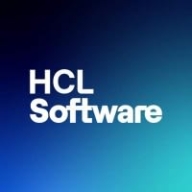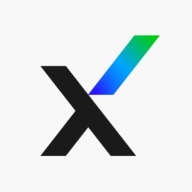

Trellix Endpoint Security Platform and BigFix are leading products in endpoint security and management. While Trellix users praise its centralized management for a cohesive enterprise solution, BigFix is recognized for its robust patch management and support for multiple OS platforms.
Features: Trellix is valued for its comprehensive centralized management interface that seamlessly integrates threat prevention, firewall, web control, and deep command functionalities. Its design is user-friendly, addressing enterprise-level security needs. BigFix stands out for its extensive patch management capabilities, offering significant advantages in inventory tracking and multi-platform support, including Linux and Unix systems. Its detailed vulnerability assessments further enhance its value, particularly in complex IT environments.
Room for Improvement: Trellix users highlight the need for optimizing resource consumption, improving speed, and enhancing integrations, notably with cloud capabilities and email protection. Calls for better automation and a reduced system profile are also noted. BigFix users express a desire for a more user-friendly interface and quicker console speeds, along with simplified multi-tenant management which could benefit from improvements in reporting and web functionalities.
Ease of Deployment and Customer Service: Trellix provides flexible deployment options across on-premises, hybrid, and public cloud environments, though some users report challenges during initial setup. Customer service reviews are mixed, with some noting responsiveness and others suggesting improved local support, notably in South Africa. BigFix receives praise for steady performance in predominantly on-premises setups but could improve its cloud deployment capabilities. Its customer service is generally well-regarded but noted for needing enhancements in communication ease.
Pricing and ROI: Trellix is considered reasonably priced, offering subscription and perpetual licensing options, though its costs are on the higher side compared to some competitors like Trend Micro. Users value the integrated DLP features which justify the cost. BigFix offers flexible pricing with per-server and per-workstation licensing options, though costs can be higher in certain regions like Turkey due to exchange rates. Both solutions deliver solid ROI through effective risk management and improved operational efficiencies.


HCL BigFix is a powerful patch management tool that enables organizations to simply control their patch management operations. It is designed so that IT security and operations teams can collaborate in the most effective way possible. Users that employ BigFix can find and fix issues with their endpoints faster than those that employ its competitors. It comes with thousands of security checks that can be deployed quickly and easily. These enable users to safeguard themselves from a wide variety of digital threats.
HCL BigFix Benefits
Some of the ways that organizations can benefit by choosing to deploy HCL BigFix include:
BigFix Features
Reviews from Real Users
HCL BigFix is a highly effective solution that stands out when compared to most of its competitors. Two major advantages it offers are its auto-patching capability and its user-friendly tools.
Santhosh K., the chief executive officer of Catnip Infotech Private Limited, writes, “The second valuable feature is, BigFix also has an auto patch updating feature, where the latest patches, and what is required for my system are automatically downloaded and kept ready for me. The solution applies the patch and notifies me after applying the patch. BigFix also gives me a ping saying that I should reset my system within a certain period of time, while the patch is being applied. Let's say, the patch is being applied and if there's an issue, the solution can revoke the applied patch, and revert back to the old state.”
Benedikt S., an application administrator, says, “It's very straightforward. The usability is very close to everyday technical tools that you use as a systems administrator. So it's quite user-friendly.”
Trellix Endpoint Security Platform offers essential features like centralized management, threat prevention, and encryption, facilitating seamless scaling and integration with other systems while prioritizing user security.
This comprehensive platform focuses on endpoint protection, antivirus capabilities, and malware defense. It enhances cybersecurity with data loss prevention, advanced threat detection, and AI-driven features for reliable protection without impacting performance. Central management and advanced reporting streamline integration and ease of use. Flexible policy deployment through the management console and its robust security measures, such as DLP and device control, further increase protection. Challenges include high CPU and memory usage affecting performance, a complex interface, and lengthy deployment. Third-party integration and Windows Hello support need improvement. Additional concerns involve improved threat detection and faster technical support responses.
What are the key features of Trellix Endpoint Security Platform?Trellix Endpoint Security Platform is widely implemented in industries such as banking and government for securing mobile and desktop devices. Its capabilities cover network security, device control, and remote access protection, catering to diverse environments by offering robust cybersecurity management against advanced threats.
We monitor all Endpoint Protection Platform (EPP) reviews to prevent fraudulent reviews and keep review quality high. We do not post reviews by company employees or direct competitors. We validate each review for authenticity via cross-reference with LinkedIn, and personal follow-up with the reviewer when necessary.